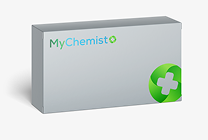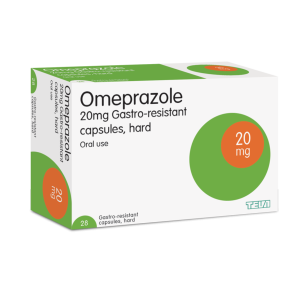Imigran Migraine Recovery Nasal Spray
- Safe & Discreet Available 24/7
- Fully inspected and regulated service
Imigran migraine recovery nasal spray is a treatment to stop the assault of a migraine and its associated symptoms which include pain and pressure in the head, nausea and vomiting and sensitivity to light and sounds.
Imigran nasal spray works by reversing the signals in the brain that cause migraines as opposed to traditional painkillers which may just mask the discomfort. The recovery spray is designed for those who have trouble swallowing tablets and its direct delivery into the nasal membranes results in a faster relief from migraine pain than an oral alternative.
Imigran nasal spray is the popular anti-migraine tablet imigran (Sumatriptan) in the form of a nasal spray. The active ingredient Sumatriptan is part of a group of drugs known as triptans (or 5-HT1 receptor agonists).These are shown to help relieve pain symptoms when traditional treatments such as painkillers are failing to provide relief.
The way they work is to reverse the changes in the brain that cause migraines and subsequently help to alleviate the pain of a migraine more effectively as opposed to paracetamol and ibuprofen which often provide temporary relief but do not produce a substantial result.
When to takeImigran nasal spray
The best time to take Imigran nasal spray is as soon as a migraine begins to form, though it can be taken at any time during an attack. It is advised not to take Sumatriptan to prevent an attack but only to use it once the migraine symptoms have started.
Dosage
The recommended dose for Adults aged 18 to 65
- one 20 mg spray into just one nostril
- Put one 10 mg spray into one nostril – this is enough for some people.
- Don’t use more than two sprays in 24 hours.
Imigran nasal spray is not recommended for people aged over 65.
When your symptoms begin to come back you can use a second Imigran nasal spray after 2 hours, but do not use more than two sprays in 24 hours.
If the first spray does not relieve the symptoms do not take a second tablet (or any otherImigran preparation) for the same attack, instead consult your GP or pharmacist for further advice.
Step-by-step guide to using your Imigran nasal spray can be found on page four of the patient information leaflet.
Migraine
A migraine is a primary headache disorder distinguished by recurrent headaches that can be moderate to severe, lasting from a few hours to a few days. It can feel like a throbbing pain on one side of the head and associated symptoms may include nausea, vomiting, and sensitivity to light, sound, or smell. It is a common health condition which often begins in early childhood affecting around one in every five women and around one in every fifteen men.
There are several different types of migraine, these include:
- migraine with aura – this is where there are specific warning signs just before the migraine begins, such as seeing flashing lights
- migraine without aura – this is the most common type, where the migraine occurs without the specific warning signs
- migraine aura without headache (also known as silent migraine) – this is where an aura or other migraine symptoms are experienced, but a headache doesn’t develop.
Some people have experience migraines frequently- up to several times a week whilst others will only have a migraine occasionally. It is possible for years to pass between migraine attacks.
When to seek medical advice
If you are experiencing frequent or severe migraines, you should consult your GP even if you are managing to control these with medication as you may benefit from a preventative treatment.
Whilst painkillers such as paracetamol and ibuprofen can help ease migraines, taking these continuously may make it harder to treat headaches over time.
Causes of migraines
There is no exact cause of migraines though it is thought they arise from a result of a temporary change in the chemicals, nerves and blood vessels in the brain. Around half of people who suffer with migraines also have a close relative with the condition which suggests that genes may be a factor.
Migraine Triggers
Some people find migraine attacks are associated with certain triggers- emotional, physical, dietary and environmental factors all can play a part.
Emotional triggers include:
- stress
- anxiety
- tension
- shock
- depression
- excitement
Physical triggers include:
- tiredness
- poor quality sleep
- shift work
- poor posture
- neck or shoulder tension
- jet lag
- low blood sugar (hypoglycaemia)
- strenuous exercise (if you’re not used to it)
- starting their period
Dietary triggers include:
- missed, delayed or irregular meals
- dehydration
- alcohol
- the food additive tyramine
- caffeine products, such as tea and coffee
- specific foods such as chocolate, citrus fruit and cheese
Environmental triggers include:
- bright lights
- flickering screens, such as a television or computer screen
- smoking (or smoky rooms)
- loud noises
- changes in climate, such as changes in humidity or very cold temperatures
- strong smells
- a stuffy atmosphere
Treating migraines
Whilst there is no cure for migraines there are several treatments available that can help reduce their symptoms
These include:
- painkillers – these include over-the-counter medications such as paracetamol and ibuprofen
- triptans – medications that can help reverse the changes in the brain that may cause migraines
- anti-emetics – medications often used to reduce nausea and vomiting
- During an attack, many people find that sleeping or lying in a darkened room can also help.
Preventing migraines
If you have identified certain triggers are causing your migraines such as stress or a specific type of food, avoiding these triggers may help reduce your chances of developing a migraine.
It would also be beneficial to maintain a healthy lifestyle, including regular exercise, enough sleep and consistent meals, together with staying hydrated and limiting your intake of caffeine and alcohol.
If your migraines are severe and/or you have tried avoiding possible triggers and are still experiencing symptoms, your GP may prescribe medication to help prevent future attacks.
Outlook
Migraines can have a debilitating effect of the lives of those who suffer and hinder daily activities with some people finding they must stay in bed for days at a time. However, there are treatments available to help reduce symptoms and prevent further attacks so that quality of life can be improved. Whilst migraine attacks can often get worse over time they can also gradually improve across many years for a lot of people.












